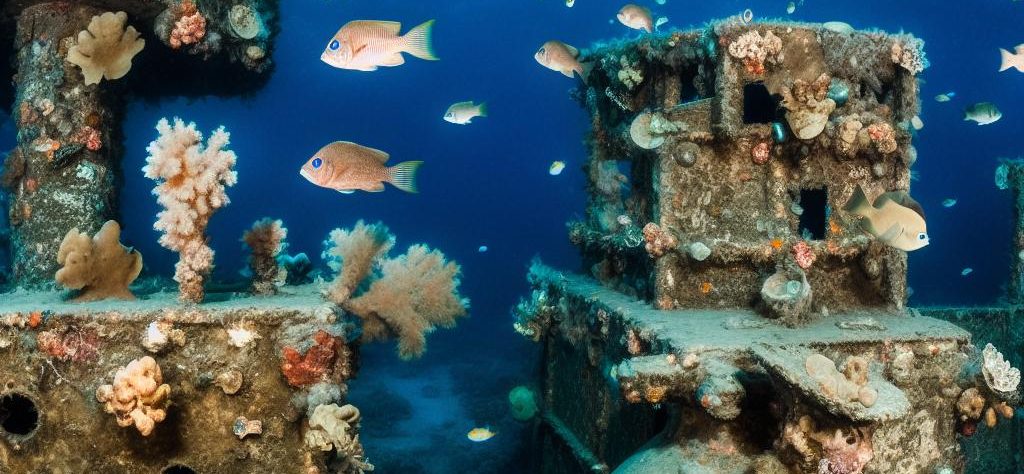Introduction
Wreck diving extends beyond a spirit of adventure and risk-taking, positioning itself as a fascinating lens through which to view historical narratives. The remnants of vessels such as ships, submarines, and even aircraft lying on the ocean floor act as submerged museums. They offer detailed insights into diverse historical epochs and significant events that have shaped maritime chronology. These submerged artifacts serve as investigative platforms for historians and divers, helping them to delve into past maritime activities, wars, and human exploits in aquatic frontiers.
Understanding Wreck Diving
Maritime exploration has always been fraught with hazards, leading to numerous vessels succumbing to the ocean’s elemental forces since ancient times. Over time, this led to the burgeoning popularity of wreck diving as a recreational activity. Yet, it inadvertently contributes to significant historical research. By meticulously examining submerged relics, divers are able to reconstruct stories of ancient trade routes, naval bloody confrontations, and seafaring traditions from cultures long past.
Wrecks as Time Capsules
Sunken vessels and aircraft act as time capsules that encapsulate historical artifacts and information which might have otherwise vanished with the passage of time. These submerged environments often contain personal trinkets, armaments, and other items preserved in their original state. This provides an irreplaceable glimpse into the life, culture, and technological prowess of the era they belonged to. The preservation of such artifacts enables scholars to conduct comprehensive analyses which are pivotal for unraveling historical mysteries.
Insights into Naval Warfare
Submerged wrecks present an unparalleled opportunity to analyze naval warfare across different historical phases. For instance, the USS Arizona, resting in Pearl Harbor, and the HMS Royal Oak in Scapa Flow are somber reminders of the heavy human casualties borne in maritime conflicts. These sites not only act as memorials honoring those who lost their lives but also serve as empirical data points for historians. Analyzing these sites allows historians and researchers to assess technological breakthroughs and strategic manoeuvers employed in historical naval confrontations.
Preservation Efforts
The preservation of these wreck sites holds paramount importance in protecting our historical and cultural legacies. Consequently, numerous countries have taken procedural steps by enacting legislation and forming specialized organizations dedicated to conserving these underwater resources. Collaborative efforts between governmental bodies, archaeologists, and diving communities aim to safeguard these sites from anthropogenic interference such as looting and environmental risks. Initiatives like these facilitate an understanding of maritime heritages and ensure the longevity of these submerged museums for continued public education and scholarly research.
Wreck Diving as a Research Tool
Beyond its allure for adventure seekers, wreck diving contributes substantially to academia. Divers and marine archaeologists frequently collaborate to analyze sites for potential historical significance. Advanced technologies like underwater photography, sonar mapping, and 3D modeling have enabled researchers to document and interpret findings with unprecedented precision. This expansive data collection enriches our knowledge about human history, particularly concerning maritime interactions, trade developments, and technological innovations.
Cultural Exchange and Trade
Wreck sites often reveal remnants or cargo indicative of historical trade routes and cultural exchange. The discovery of specific artifacts can reveal the type of goods exchanged, providing insight into the economic interactions of past societies. Such findings have broadened the understanding of historical economies and illuminated how ancient cultures influenced one another through trade.
Technological Evolution
By studying the mechanical components of sunken vessels, researchers can trace the evolution of maritime technology. Protectively submerged from weathering and human damage, these components often remain in their original state. They illuminate changes in shipbuilding techniques, navigational instruments, and other maritime technological advancements over time. This not only expands historical knowledge but also informs modern engineering and design methods.
Challenges in Wreck Diving
Despite the substantial benefits, wreck diving is not without its challenges. The endeavour often involves navigating complex legalities regarding underwater heritage. Different countries have varying stipulations about who can explore and recover artifacts from wrecks within their waters. Furthermore, the delicate nature of underwater exploration necessitates stringent adherence to environmental guidelines to prevent damaging these sites.
Sites of Educational Significance
Numerous wreck sites hold essential educational value for both professional historians and amateurs. Workshops and courses often use wreck diving as a unique hands-on educational tool. By engaging with actual sites of historical significance, these programs offer immersive learning experiences, enabling participants to connect theoretical knowledge with real-world applications intimately.
Conclusion
Wreck diving locations bear immense historical and educational significance. Standing at the intersection of recreational delight and academic inquiry, they furnish profound insights into human history and the progression of maritime technology. As global interest in this distinct form of underwater exploration swells, so too does the crucial need to conserve and protect these underwater time capsules. Safeguarding such sites ensures that future generations can continue to explore and learn from these invaluable windows into our collective past.

